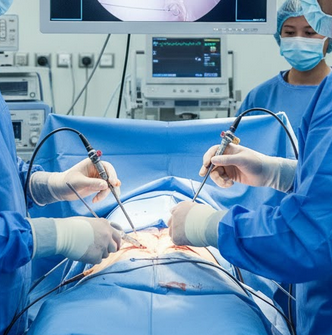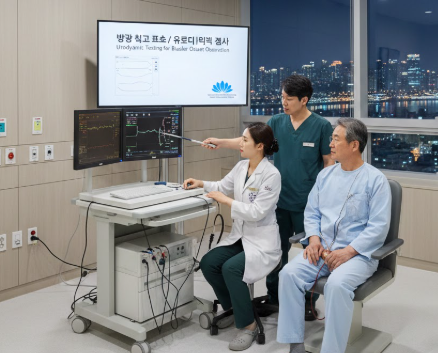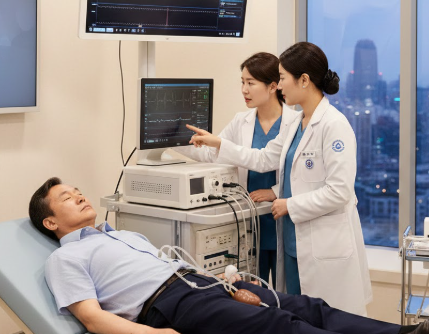Treatment Overview
The Endoscopic-Assisted Vaginal Hysterectomy (EAVH) in Korea represents a modern, minimally invasive surgical approach that combines the benefits of vaginal hysterectomy with endoscopic visualization for greater precision and safety. This hybrid procedure allows surgeons to remove the uterus through the vaginal canal while using a high-definition endoscope to guide the surgery from within the pelvis. Korean gynecologic centers have refined this approach using 3D endoscopic imaging, AI-guided visualization, and ultra-fine laparoscopic instruments, resulting in faster recovery, reduced pain, and minimal scarring.
EAVH is one of the most popular hysterectomy options in Korea, especially for women seeking a less invasive alternative to open or total laparoscopic hysterectomy, with superior cosmetic and functional outcomes.
Purpose & Benefits
The goal of Endoscopic-Assisted Vaginal Hysterectomy is to provide an effective surgical solution for uterine diseases while minimizing trauma and downtime.
Key purposes include:
- Treating fibroids, adenomyosis, or uterine prolapse
- Managing abnormal uterine bleeding or chronic pelvic pain
- Removing the uterus safely in patients who wish to avoid abdominal scars
Major benefits:
- No visible external incisions or scars
- Shorter operation time compared to conventional hysterectomy
- Reduced post-operative pain and infection risk
- Faster recovery and minimal hospital stay
- Enhanced surgical precision through real-time endoscopic imaging
Ideal Candidates
This procedure is suitable for women who:
- Have a moderately sized uterus suitable for vaginal removal
- Are diagnosed with benign uterine diseases such as fibroids, adenomyosis, or endometriosis
- Desire a no-scar surgical option with minimal postoperative discomfort
- Have not had extensive prior pelvic surgery or severe adhesions
Korean doctors perform a thorough preoperative assessment to determine uterine size, vaginal accessibility, and overall pelvic condition before recommending EAVH.
Possible Risks & Complications
Although EAVH is extremely safe when performed by Korea’s skilled surgeons, possible risks include:
- Minor vaginal bleeding or infection
- Urinary tract injury or temporary bladder discomfort
- Rare bowel or ureteral injury
- Anesthesia-related side effects
- Occasional pelvic floor weakness (usually preventable through physiotherapy)
Due to Korea’s advanced imaging and surgical navigation systems, complication rates are among the lowest globally.
Surgical Techniques Used
Korean hospitals use a combination of cutting-edge technologies and refined surgical methods for optimal results:
- Endoscopic-Guided Dissection: 3D endoscope provides real-time visualization for precise uterine separation.
- Vaginal Access Technique: Uterus removed through the vaginal canal, avoiding abdominal incisions.
- Energy-Based Devices: Use of ultrasonic scalpels or bipolar energy tools for minimal blood loss.
- Fluorescence Imaging & AI Navigation: Helps identify vascular and nerve structures to prevent injury.
- Hybrid Laparoscopic Assistance (if needed): Allows improved visibility for complex pelvic anatomies.
Korean surgeons are internationally recognized for performing endoscopic-assisted vaginal hysterectomy with exceptional precision and aesthetic consideration.
Recovery & Aftercare
The recovery period for EAVH is shorter than most hysterectomy types. Patients typically stay 1–2 days in the hospital and can resume light activity within a week.
Post-operative care includes:
- Pain and infection control
- Regular wound and vaginal care
- Avoiding sexual activity and heavy lifting for 4–6 weeks
- Pelvic floor rehabilitation to strengthen muscles and support recovery
Korean hospitals also provide holistic recovery programs, including hormone management, dietary plans, and physiotherapy sessions to enhance healing and well-being.
Results & Longevity
Endoscopic-Assisted Vaginal Hysterectomy in Korea offers long-term symptom relief and improved pelvic function. Patients report significant reduction in pain, bleeding, and discomfort with excellent aesthetic satisfaction. Since the uterus is completely removed, recurrence of related conditions (fibroids, adenomyosis, etc.) is extremely rare. The functional outcomes—such as sexual comfort and bladder stability—remain well-preserved due to Korea’s meticulous surgical standards.
Treatment Process in Korea
Korea’s medical infrastructure and precision technology have positioned it as a global leader in gynecologic minimally invasive surgery. The treatment journey typically involves:
- Preoperative evaluation: Advanced imaging (3D ultrasound, MRI) and hormone analysis.
- Customized surgical planning: Tailored according to uterine size, anatomy, and patient preference.
- Endoscopic-assisted vaginal surgery: Conducted under 3D visualization with AI navigation for utmost accuracy.
- Post-surgical care: Includes enhanced recovery programs, follow-up imaging, and personalized wellness care.
Korean hospitals utilize fluorescence imaging systems, micro-endoscopic cameras, and AI-enhanced surgical platforms, ensuring optimal outcomes with minimal pain. Patients also benefit from seamless international patient services, language assistance, and private recovery suites.
Cost Range
The cost of Endoscopic-Assisted Vaginal Hysterectomy in Korea ranges between USD 5,000 and 10,000, depending on hospital type, case complexity, and surgeon experience.
Typical packages include:
- Pre-surgery evaluations and imaging
- Surgery, anesthesia, and hospitalization
- Post-operative care and follow-up consultations
Compared to Western countries, Korea offers high-end technology and premium medical standards at a significantly lower cost, making it one of the most cost-effective destinations for hysterectomy.
Popular Clinics
- Severance Hospital (Yonsei University Health System, Seoul): Leading center for minimally invasive and vaginal hysterectomy procedures.
- Asan Medical Center (Seoul): Specializes in advanced gynecologic surgeries with endoscopic guidance.
- Samsung Medical Center (Seoul): Offers hybrid laparoscopic-vaginal hysterectomy with 3D imaging.
- CHA Gangnam Medical Center: Renowned for fertility-preserving and minimally invasive women’s surgeries.
- Ewha Womans University Medical Center: Known for endoscopic excellence and women-centered care programs.




